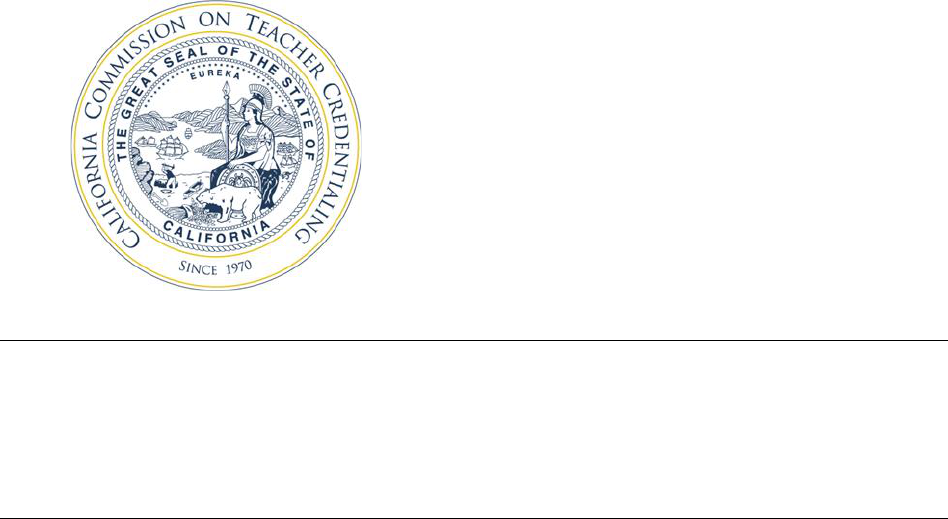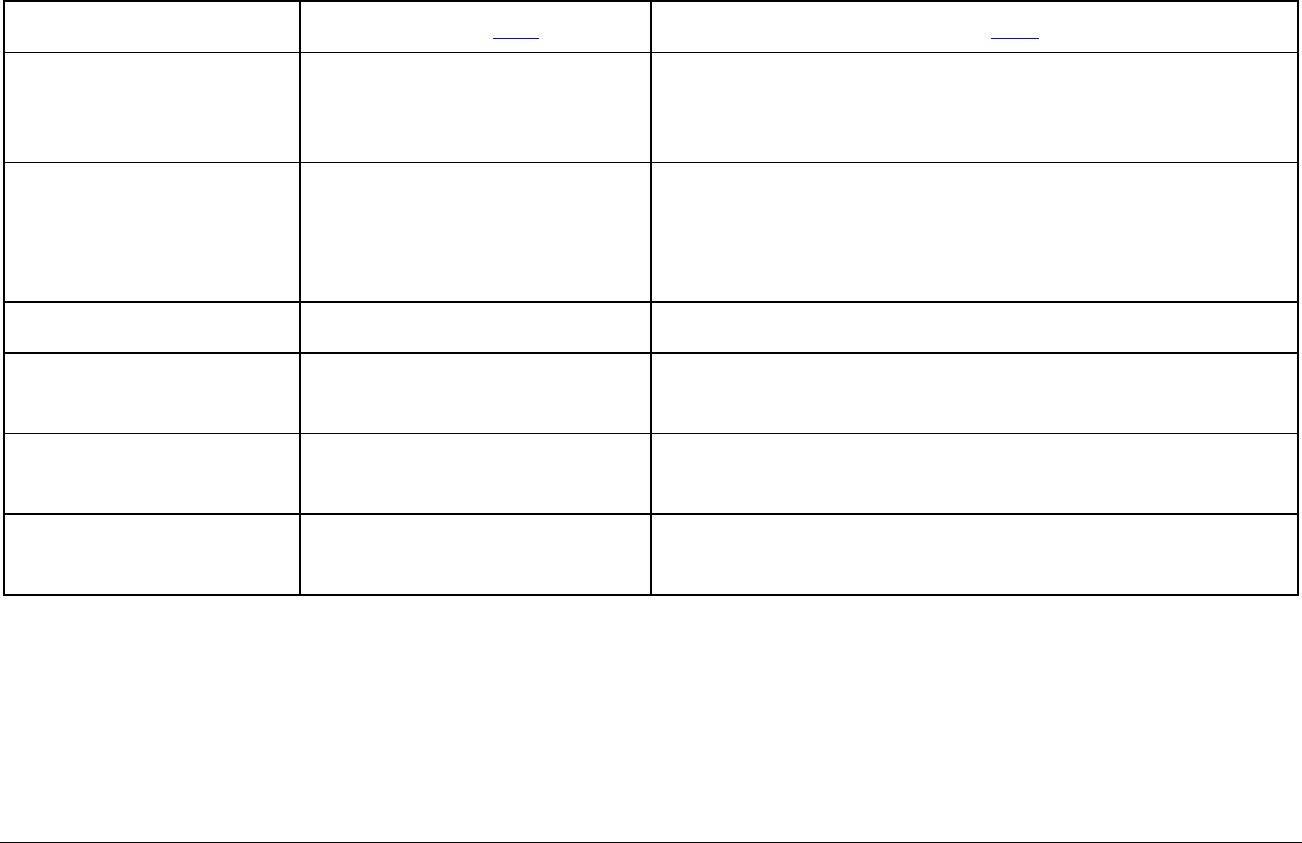
PROGRAM
SPONSOR
ALERT
DATE:
March 16, 2021
NUMBER:
21-01
SUBJECT: Individual Development Plan for Documentation of Educator Preparation during
COVID-19
Summary:
The standards for institutions sponsoring preliminary teacher preparation programs leading to
general education and/or special education teaching credentials require the preliminary
program to develop an Individual Development Plan (IDP) with each candidate before the
candidate exits the program. This required IDP is intended to be used by the teacher’s induction
program to help guide and inform the new teacher’s induction experience. Given the changes in
educator preparation programs necessitated by the COVID-19 pandemic, this document has
become more critical than ever to assist with identifying the areas of strength and growth for
candidates as they exit teacher preparation programs and begin their practice as professional
educators.
Key Provisions:
The Preliminary Multiple and Single Subject Teaching Credential Program Standards (Standard
6), the 2014 Preliminary Education Specialist Teaching Credential Program Standards (Standard
16), and the 2018 Preliminary Education Specialist Teaching Credential Program Standards
(Standard 6) all require that candidates, district-employed supervisors, and program
supervisors must collaborate on developing an individual development plan (IDP) before
candidates exit the program. The IDP must provide recommendations for professional
development and growth during the candidate’s clear induction program. Candidates bring
their IDP document to the teacher induction program to inform the creation of their Individual
Learning Plan (ILP) which, in turn, will guide their induction experience. The ILP is the document
that captures the areas of focus aligned to the California Standards for the Teaching Profession
(CSTP) for the teacher’s growth and development of mentor-based support throughout their
teacher induction experience.

PROGRAM SPONSOR ALERT 21-01: Individual Development Plan for Documentation of Educator Preparation during
COVID-19 Page 2
Use of a Common Name/Terminology
Induction program leaders have noted that, in some cases, induction candidates are unaware of
the existence of their IDP and/or do not understand its relevance or importance to their
induction experience as they enter the profession. One of the challenges noted by teacher
induction program leaders is that different preliminary program institutions call this document
by different names. This causes confusion on the part of candidates when asked for this
document by induction programs. To maintain consistency and lessen confusion using the term
“Individual Development Plan” will help ensure that candidates recognize the terminology and
will be more likely to make this document available to their induction program. Teacher
Induction program leaders recommend that all preliminary programs ensure that their
candidates understand what the IDP is, how it is used, and the vital and intentional role it plays
in the learning to teach continuum for candidates moving from preservice to induction.
Common Components to Include in the IDP
To date, there has been a wide range of information included in the IDP across institutions.
Program leaders have suggested that these documents may be more useful and informative if
there were certain components that were uniform across all. Ensuring that these common
components are included in all IDPs is particularly important at this time given the unique
circumstances posed by COVID-19, where candidate experiences in preliminary programs may
differ in significant ways. These common components can be found in Appendix A to this PSA
and include contact information for the preliminary preparation program; identification of the
credential for which the candidate has been recommended; the candidate’s program
requirements; the candidate’s level of practice; and acknowledgments.
When developing the IDP collaboratively with the candidate, the program supervisor, and the
district employed supervisor, the preliminary program should also ensure that the IDP includes
critical information so that the induction program can provide appropriate support to the
induction candidate in the areas of the Teaching Performance Expectations (TPEs). This is
especially critical for candidates who may not have had as much exposure to each of the TPE
areas during his/her preparation program due to parameters associated with COVID-19.
Included as Appendix B of this PSA is a chart identifying the TPEs in which candidates may have
received strong preparation given the circumstances surrounding P-12 education due to the
COVID-19 pandemic and the TPEs where candidates may need additional support in their first
years of teaching. It is recommended that preliminary preparation programs refer to the chart
to provide appropriate information about the candidates exiting their program so that the
induction program will know what supports are likely to be needed by the candidate as they
begin their teaching career.
Preliminary programs should work closely with their partner induction programs to determine if
there are any additional considerations for inclusion in the IDP. Including more specificity in
each candidate’s IDP ensures that candidates receive more robust mentoring and support in
the appropriate areas and will experience continued growth in the teaching profession. Given
the range of candidate preparation experiences across the state, the IDP has increasing

PROGRAM SPONSOR ALERT 21-01: Individual Development Plan for Documentation of Educator Preparation during
COVID-19 Page 3
importance in each candidate’s growth and development as they transition into a role as
teacher of record.
Candidate Understanding of the IDP Purpose and Portability
As preliminary programs work with candidates to develop their IDP, it is important that they
ensure that candidates clearly understand the purpose of the IDP and its role in their future
growth and development in the teaching profession. Candidates should be informed that they
will be asked for this document from their induction program and that they should treat the
document as they would a transcript. Candidates should understand that the IDP will be used to
inform the development of the Individual Learning Plan and that this document cannot be
transmitted by the preliminary program to the induction program but rather it is the
candidate’s responsibility to ensure that the induction program receives this document.
Important Dates:
COVID-19 has impacted the way education has been delivered across the spectrum in California
from the end of the 2019-20 school year through the 2020-21 school year. The ramifications of
this pandemic are still being experienced by the education community.
Background:
The Commission acted in April 2020 to provide flexibilities for candidates and program
completers impacted by the COVID-19 pandemic for the academic year 2019-20. In May 2020,
the Governor issued an Executive Order that authorized programs to recommend candidates
for preliminary credentials who may not have passed the Reading Instruction Competency
Assessment and/or completed all cycles of a Performance Assessment, requiring candidates to
complete these assessments prior to obtaining a clear credential. Senate Bill 820 (Committee of
Budget and Fiscal Review) extended these flexibilities through August 2021 to apply to
candidates enrolled in programs during academic year 2020-21 who continued to be impacted
by COVID. The flexibilities adopted by the Commission and allowed by the Executive Order have
altered the teacher preparation experience for candidates who completed in the spring of 2020
and during the 2020-21 academic year.
Sources:
Executive Order N-66-20
SB 820
References:
April 2020 Commission item
August 2020 Commission item
Preliminary Multiple and Single Subject Program Standards (2015)
Preliminary Education Specialist Teaching Credential Program Standards (2008)
Preliminary Education Specialist Teaching Credential Program Standards (2018)

PROGRAM SPONSOR ALERT 21-01: Individual Development Plan for Documentation of Educator Preparation during
COVID-19 Page 4
Contact Information:
The Professional Services Division provides a full list of topic and program specific dedicated
email addresses at: https://www.ctc.ca.gov/educator-prep/psd-contact.
EPC 3A-5 February 2021
Appendix A
INDIVIDUAL DEVELOPMENT PLANS
PRELIMIANRY MS/SS/EDUCATION SPECIALIST PROGRAMS
Components that all Preliminary Teacher Candidate IDPs should address:
A. Contact information for Preliminary Teacher Preparation Program
1. Institution
2. Enrollment dates
3. Pathway
4. Program contact (name, position)
5. Email
6. Phone
B. Identification of the Credential that has been Recommended for this Candidate
1. Preliminary Credential (P5),
2. Preliminary Credential with a Renewal code (P5 with TPA and/or RICA), or
3. Program Sponsor Variable Term Waiver (PS-VTW)
C. Candidate’s Program Requirements
1. Identification of any remaining Preliminary Credential requirements including TPA—
which model and status of submission(s), RICA, Basic Skills, Subject Matter.
2. Information on the breadth and depth of supervised clinical practice that the
candidate completed, including the modalities in which the candidate was supervised,
e.g., virtual, hybrid, in-person.
D. Candidate’s Level of Practice
1. Identification of specific TPEs/CSTPs where the candidate has demonstrated strength.
2. Identification of specific TPEs/CSTPs where the candidate’s skills need focused
mentoring and coaching to support continued development.
E. Acknowledgements
1. Acknowledgement that the preliminary program, candidate, district-employed
supervisor, and program supervisor collaborated on the development of the individual
development plan (IDP).
2. Acknowledgement that the IDP is a portable document archived by the preliminary
program and provided to the candidate for transmission to the induction program and
employer.
3. Acknowledgement that the program completer has received a copy of the IDP and
understands the requirement to provide the IDP to the teacher induction program.

PROGRAM SPONSOR ALERT 21-01: Individual Development Plan for Documentation of Educator Preparation during COVID-19 Page 6
Appendix B
2020-2021 TEACHER CANDIDATES AND THE TEACHING PERFORMANCE EXPECTATIONS
Teachers completing preparation in 2021 will likely have strengths in these areas:
Skills
Aligned TPEs
Aligned CSTP
Engaging students
1.2, 1.8,
2.2, 2.6,
3.4
1: Engaging and Supporting All Students in Learning
2: Creating and Maintaining Effective Environments for Student
Learning
Using technology to support
learning
3.6, 3.7, 3.8,
4.7, 4.8
3: Understanding and Organizing Subject Matter for Student
Learning
4: Planning Instruction and Designing Learning Experiences for
All Students
Assessing Student Learning
5.4
5: Assessing Student for Learning
Interacting with parents
and families
1.2,
6.4
1: Engaging and Supporting All Students in Learning
6: Developing as a Professional Educator
Differentiating instruction
to meet student needs
4.7, 4.8
4: Planning Instruction and Designing Learning Experiences for
All Students
Developing as a
professional
6.2 (especially positive
dispositions), 6.5
6: Developing as a Professional Educator

PROGRAM SPONSOR ALERT 21-01: Individual Development Plan for Documentation of Educator Preparation during COVID-19 Page 7
Teachers completing preparation in 2021 will likely need support in these areas:
Skills
Aligned TPEs
Aligned CSTP
Classroom management
2.1, 2.3, 2.2, 2.6
2: Creating and Maintaining Effective Environments for Student
Learning
Routine school site activities like
recess duty, interacting across
grade levels,
2.2, 2.6
1: Engaging and Supporting All Students in Learning
2: Creating and Maintaining Effective Environments for Student
Learning
6: Developing as a Professional Educator
Planning and Designing Learning
Experiences for All Students
4.4 (last 2 items), 4.6, 4.7
4: Planning Instruction and Designing Learning Experiences for
All Students
Fostering a caring community in
person, rather than through
technology
2.1, 2.2, 2.6
2: Creating and Maintaining Effective Environments for Student
Learning
Establishing a safe environment in
person, rather than through
technology
2.1, 2.2, 2.6
2: Creating and Maintaining Effective Environments for Student
Learning
Organizing group activities for
students in person, rather than
through technology
4: Planning Instruction and Designing Learning Experiences for
All Students
Cycle of assessment across a school
year due to so many regular
assessment routines being waived
during the pandemic
Elements of TPE 5
5: Assessing Student for Learning
No Data
